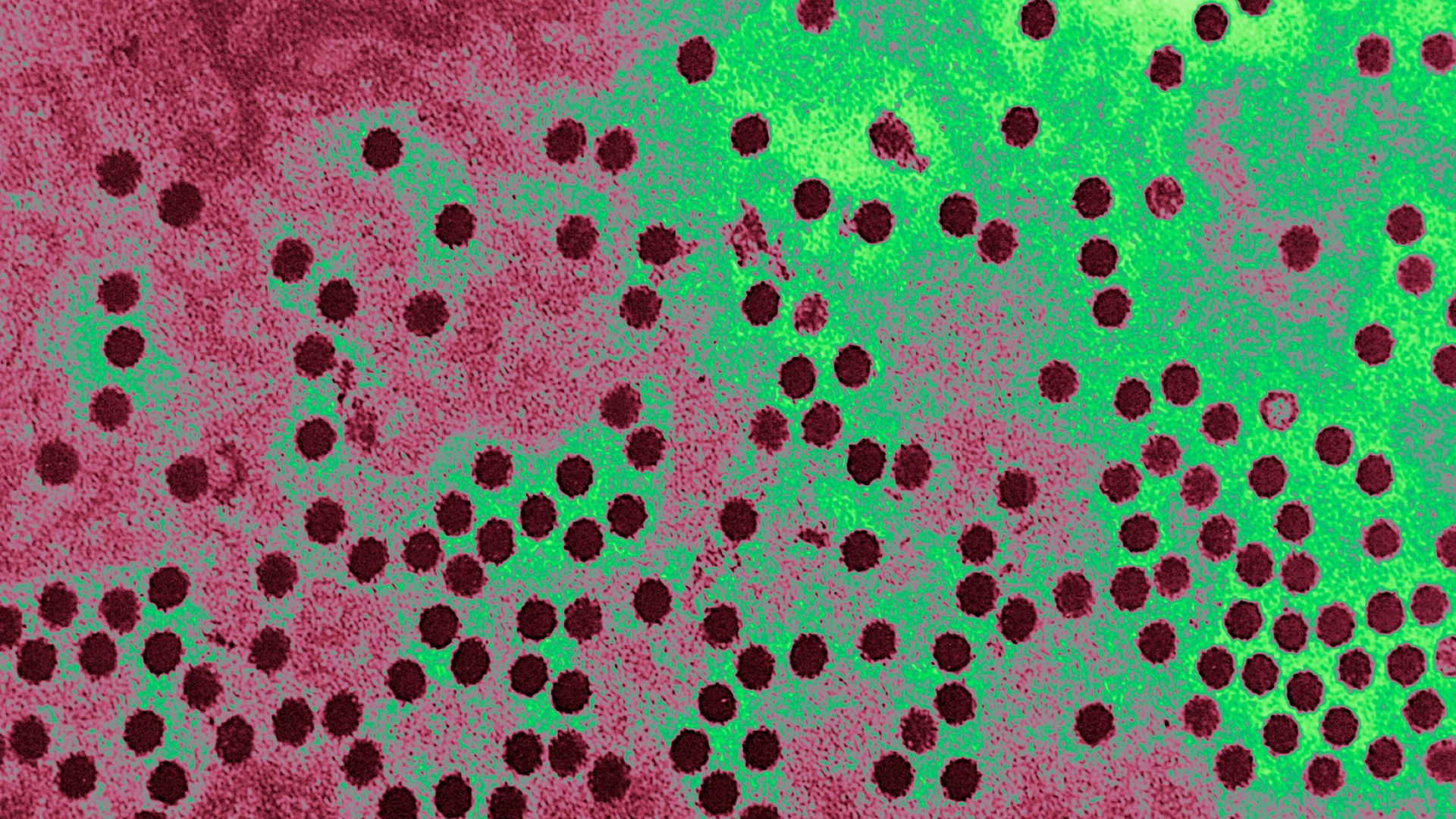
Parvovirus cases on the rise in humans: CDC
By Karah Rucker (Anchor), Shea Taylor (Producer), Zachary Hill (Video Editor)
A seasonal respiratory virus that hasn’t been much of an issue since the COVID-19 pandemic is on the rise once again. The CDC issued a health alert on Tuesday, Aug. 13, over human parvovirus – more commonly known as parvo.
Media Landscape
See how news outlets across the political spectrum are covering this story. Learn moreBias Distribution
Left
Right
Right
Untracked Bias
That name might sound more familiar to dog owners. It’s one of the most contagious illnesses among canines — so much so, the parvo vaccine is included in their regular immunizations.

Download the SAN app today to stay up-to-date with Unbiased. Straight Facts™.
Point phone camera here
But parvo can be a human illness too, and the CDC says it’s been getting more reports of people testing positive for this variant of the virus lately.
Parvo is spread through respiratory droplets. Adults are usually less likely to catch the illness, due to exposure to parvo when they were young. Most have antibodies built up against the illness. According to the CDC, people who work with children, like in schools or daycares, are at a higher risk for infection.
The agency said it’s been getting more reports of parvo among those who are pregnant, leading to complications like severe fetal anemia or miscarriage, and increases in aplastic anemia in those with sickle cell disease.
Most people with parvo don’t show any symptoms, but if they do, the CDC said symptoms come in two phases.
About a week after infection, an individual might experience a fever, muscle aches or general malaise. This phase is when people are most contagious, and it usually lasts around five days.
Then, in the second phase of the illness, children usually develop a hallmark facial rash often called a “slapped cheek rash,” followed by a body rash or joint pain. Adults often have a rash on their torso, coupled with back and joint pain.
Unbiased news.
Directly to your inbox. Free!
Learn more about our emails. Unsubscribe anytime.
By entering your email, you agree to the Terms & Conditions and acknowledge the Privacy Policy.
There’s no human vaccine for parvo, nor is there a specific treatment other than easing symptoms. The CDC said most infections will clear up on their own.
A SEASONAL RESPIRATORY VIRUS THAT HASN’T BEEN MUCH OF AN ISSUE SINCE THE COVID-19 PANDEMIC IS ON THE RISE ONCE AGAIN.
THE C-D-C HAS ISSUED A HEALTH ALERT OVER HUMAN PARVO-VIRUS – MORE COMMONLY KNOWN AS PARVO.
THAT NAME MIGHT SOUND MORE FAMILIAR TO DOG OWNERS.
IT’S ONE OF THE MOST CONTAGIOUS ILLNESSES AMONG CANINES… SO MUCH SO, THE PARVO VACCINE IS INCLUDED IN THEIR REGULAR IMMUNIZATIONS.
BUT, PARVO CAN BE A HUMAN ILLNESS TOO… AND THE C-D-C SAYS IT’S BEEN GETTING MORE REPORTS OF PEOPLE TESTING POSITIVE FOR THIS VARIANT OF THE VIRUS LATELY.
PARVO IS SPREAD THROUGH RESPIRATORY DROPLETS… AND ADULTS ARE USUALLY SAFE FROM IT BECAUSE THEY HAD IT WHEN THEY WERE YOUNGER AND BUILT UP ANTIBODIES TO IT.
THE C-D-C SAYS PEOPLE WHO WORK WITH CHILDREN – LIKE IN SCHOOLS OR DAYCARES – ARE AT A HIGHER RISK FOR INFECTION.
THE AGENCY SAYS IT’S BEEN GETTING MORE REPORTS OF PARVO AMONG PREGNANT PEOPLE… LEADING TO COMPLICATIONS LIKE SEVERE FETAL ANEMIA OR MISCARRIAGE – AND INCREASES IN APLASTIC ANEMIA IN PEOPLE WITH SICKLE CELL DISEASE.
MOST PEOPLE WITH PARVO *DON’T* SHOW ANY SYMPTOMS, BUT IF YOU DO – THE C-D-C SAYS YOU’LL LIKELY NOTICE TWO PHASES.
ABOUT A WEEK AFTER INFECTION – YOU MIGHT HAVE A FEVER, MUSCLE ACHES, OR JUST ON OVERALL ICKY FEELING.
THE C-D-C SAYS THIS TIME IS WHEN PEOPLE ARE MOST CONTAGIOUS AND IT USUALLY LASTS AROUND FIVE DAYS.
THEN, IN SECOND PHASE OF THE ILLNESS – CHILDREN USUALLY DEVELOP A HALLMARK FACIAL RASH OFTEN CALLED A “SLAPPED CHEEK RASH” FOLLOWED BY A BODY RASH OR JOINT PAIN.
ADULTS OFTEN HAVE A RASH ON THEIR TORSO AND BACK – AND JOINT PAIN.
THERE’S NO *HUMAN* VACCINE FOR PARVO, NOR IS THERE A SPECIFIC TREATMENT OTHER THAN EASING SYMPTOMS.
THE C-D-C SAYS MOST INFECTIONS WILL CLEAR UP ON THEIR OWN.
Media Landscape
See how news outlets across the political spectrum are covering this story. Learn moreBias Distribution
Left
Right
Right
Untracked Bias
Straight to your inbox.
By entering your email, you agree to the Terms & Conditions and acknowledge the Privacy Policy.
MOST POPULAR
-
 Getty Images
Getty Images
Democrats in Congress receive lowest approval rating in Quinnipiac poll history
Watch 2:599 hrs ago -
 Getty Images
Getty Images
AG Bondi reviewing Epstein documents for release, could hold client list
Watch 1:489 hrs ago -
 Getty Images
Getty Images
Speaker Johnson won’t support DOGE stimulus checks
Watch 2:0611 hrs ago -
 Reuters
Reuters
UN chief reveals his plan for peace in Haiti to Caribbean leaders
Watch 2:1513 hrs ago




